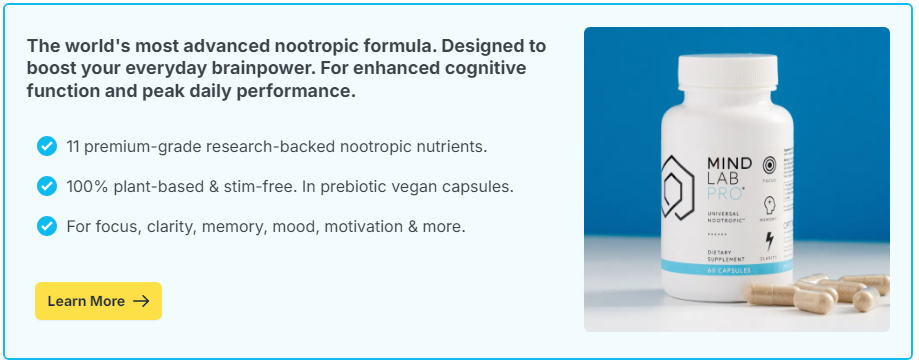
You tap your pen. Your foot bounces. You spin your ring, doodle in the margins, or twist your hair around your finger. You might not even notice you’re doing it—until someone points it out. For centuries, fidgeting has been seen as a sign of boredom, distraction, or disrespect. But what if it’s not a bad habit at all? What if fidgeting is your brain’s way of staying on track?
Emerging neuroscience suggests that those small, seemingly aimless movements may actually enhance focus, support memory, and improve cognitive performance—especially for people with ADHD, anxiety, or sensory sensitivities. In fact, under certain conditions, fidgeting isn’t a bug in your attention system. It’s a feature.
From classroom desks to office chairs, we’ve long tried to suppress these restless movements. But the science is beginning to tell a different story—one where fidgeting is less about distraction and more about the brain’s need to move in order to think clearly.
Contents
Why Do We Fidget? The Brain-Body Connection
Fidgeting is defined as small, repetitive, or subconscious movements of the body—often involving the hands, feet, or posture. While it’s traditionally interpreted as a sign of inattention, recent studies indicate that fidgeting is often an unconscious self-regulation strategy.
Movement as Mental Regulation
When your brain is trying to concentrate, especially on tasks that require sustained attention or impulse control, it recruits motor activity as a form of cognitive scaffolding. That’s right—those repetitive gestures might be doing mental heavy lifting.
The prefrontal cortex, which governs executive function (focus, working memory, impulse control), is closely connected to motor control regions. In situations of cognitive strain or boredom, activating the motor system through fidgeting can keep the brain alert and engaged.
Fidgeting as Sensory Input
Fidgeting may also serve as a form of sensory regulation. The brain craves a balance between stimulation and calm. When under-stimulated, it seeks input—especially tactile or proprioceptive (movement-based) feedback. Small movements may offer just enough stimulation to maintain alertness without becoming disruptive.
The ADHD Connection: Movement as Focus Aid
One of the strongest links between fidgeting and cognitive benefit comes from research on ADHD. For individuals with attention-deficit/hyperactivity disorder, fidgeting isn’t just common—it’s often necessary.
Study Spotlight
A 2015 study published in *Child Neuropsychology* found that children with ADHD performed better on working memory tasks when they were allowed to move. The more they fidgeted—tapping, bouncing, shifting—the better their task performance. In contrast, restricting movement led to a sharp drop in cognitive accuracy.
This supports the idea that motor activity helps stimulate underactive brain circuits in people with ADHD, especially in the frontal lobe. Fidgeting may be their brain’s attempt to compensate and maintain mental engagement.
Classroom and Workplace Implications
Instead of asking fidgeters to sit still, environments could be adapted to support movement-friendly focus. Tools like:
- Fidget cubes or stress balls
- Wobble stools or standing desks
- Chewable jewelry for sensory feedback
- Foot rollers or under-desk pedals
These aren’t distractions—they’re cognitive support tools. When used appropriately, they help people channel restlessness into movement that fuels mental clarity.
Does Fidgeting Help Everyone Focus?
You don’t have to have ADHD to benefit from fidgeting. Many people naturally engage in small movements during cognitively demanding tasks—especially when trying to remember something or resist distraction.
Memory and Kinesthetic Cues
Movement can create kinesthetic anchors that help with recall. For example, you might remember a fact better when you’re tapping your fingers in a certain rhythm. This connection between movement and memory taps into embodied cognition—the theory that our thoughts are grounded in physical experience.
The Focus-Support Curve
Of course, not all fidgeting is helpful. There’s a sweet spot. Minimal, rhythmic movements can enhance focus. But excessive or erratic movement may become a distraction—especially if it interrupts others or overrides your main task.
The key is to find purposeful fidgeting—small actions that soothe, ground, or stimulate just enough to keep your mental gears turning without creating chaos.
The Neurochemistry Behind Movement and Attention
There’s more going on here than muscle twitches. Fidgeting may help modulate neurotransmitter systems, especially dopamine and norepinephrine—chemicals that regulate attention, mood, and motivation.
Stimulation and Dopamine
When you fidget, your brain may release small bursts of dopamine—a key player in attention and reward processing. For people whose dopamine systems are sluggish (common in ADHD and burnout), movement can help bridge the motivational gap and spark focus.
This aligns with how many nootropics work—boosting dopamine or supporting neurotransmitter balance to sharpen mental performance. While supplements target the brain chemically, fidgeting does so mechanically. They’re two different tools with overlapping outcomes.
Fidgeting as a Stress Response
In addition to focus support, fidgeting also shows up in moments of anxiety or emotional discomfort. Shaking your leg during a stressful conversation or pacing during a tough phone call isn’t a random tic—it’s your nervous system seeking regulation.
Self-Soothing Through Motion
Movement activates the parasympathetic nervous system, which helps reduce the fight-or-flight response. It provides physical grounding, helping you stay present instead of spiraling into worry or reactivity.
Think of it like a natural pacifier for the adult nervous system. A small, repetitive gesture can keep your stress response in check, maintaining emotional and cognitive balance.
Building a Focus-Friendly Environment Through Movement
Whether you’re neurodivergent or simply prone to distraction, adding movement to your workspace can help. Here’s how to build a brain-friendly setup:
- Use fidget tools: Choose items that are quiet, subtle, and engaging—like fidget rings, cubes, or kneadable erasers.
- Incorporate standing/moving breaks: Use the Pomodoro technique with movement during each break interval.
- Try active seating: Balance balls, foot swings, or ergonomic stools promote micro-movements.
- Walk while thinking: Walking meetings or pacing during phone calls can supercharge ideation and clarity.
Pairing Movement with Mental Support
For those looking to optimize focus further, some find that combining subtle movement with cognitive supplements (such as nootropics) enhances mental clarity. While movement supports attention through physical stimulation, nootropics may offer chemical reinforcement. Together, they target multiple pathways to sustained focus.
Changing the Narrative Around Fidgeting
It’s time to stop seeing fidgeting as a problem. In many cases, it’s a solution—an adaptive strategy the brain uses to stay alert, calm, and engaged. What once looked like a lack of discipline is often a subtle form of self-regulation.
Like so many quirks of human behavior, fidgeting exists for a reason. It’s a reminder that cognition isn’t confined to the skull. It lives in the body, in motion, in the rhythms we barely notice—and sometimes, in the silent tapping of a restless foot.
So the next time someone twirls a pencil during a meeting, or you catch yourself bouncing a knee while working, remember: that motion might just be the key to staying sharp. The mind isn’t a still pond—it’s a river. And sometimes, a little ripple keeps the current flowing.

